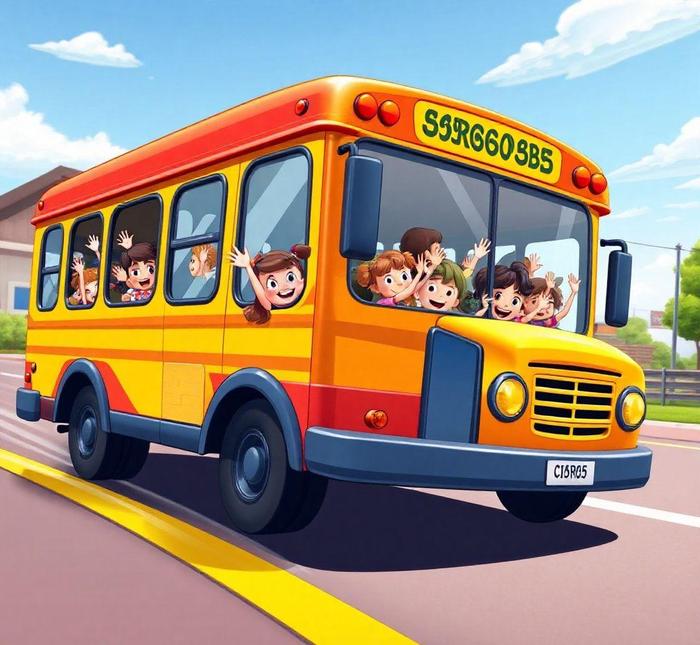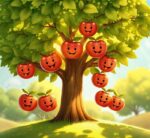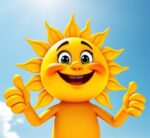- You are here:
- Home »
- words
- » Kindergarten Words That Start With K [LIST]

Kindergarten Words That Start With K [LIST]
When teaching young children, introducing them to new words is an essential part of their early education. Focusing on specific letters of the alphabet, such as the letter “K”, can help kids improve their phonetic awareness and vocabulary. Kindergarten words that start with K often include simple, fun terms that children can easily relate to, such as “kite”, “kangaroo”, and “king”. These words are not only easy to pronounce but also offer visual or conceptual associations that make learning enjoyable for young learners. By incorporating these words into games, songs, and daily conversations, teachers can foster a positive learning environment and encourage early literacy skills.
The letter ‘K’ is often less frequent in early learning materials compared to other letters, making it a great opportunity to expand children’s vocabulary in new and interesting ways. Words starting with K are also useful for helping kids understand letter sounds and begin blending them into more complex words as they grow. Whether you’re a teacher, parent, or caregiver, introducing a list of kindergarten words that start with K is an excellent way to enrich a child’s language development and expand their understanding of the world around them. This collection of words can serve as a fun, interactive resource for engaging children in early learning activities.
Kindergarten Words That Start With K
1. kangaroo
A kangaroo is a large, hopping marsupial from Australia. They have strong hind legs and a long tail used for balance. Kangaroos are herbivores and typically live in open plains and forests.
Examples
- The kangaroo is known for its powerful legs and large tail.
- A baby kangaroo is called a joey and stays in its mother’s pouch.
- Kangaroos live in Australia and are excellent jumpers.
2. kite
A kite is a lightweight object that is flown in the air, usually on a string. Kites are made from materials like paper or fabric and are often flown on windy days for fun.
Examples
- We flew a colorful kite at the park on a windy day.
- The kite soared high in the sky as the wind picked up.
- Kites come in many shapes and sizes, some with tails and some without.
3. key
A key is a small, metal tool used to open locks. It is an important object for securing doors, cabinets, and other items that need to be kept private or safe.
Examples
- I lost my key, and now I can’t open the door.
- The key to the treasure chest was hidden under a rock.
- Make sure to keep the key in a safe place.
4. kitten
A kitten is a young cat, usually very playful and energetic. Kittens are often adopted as pets and are known for their cute, small size and curiosity.
Examples
- The kitten is soft and loves to play with yarn.
- I adopted a cute little kitten from the animal shelter.
- The kitten followed its mother everywhere she went.
5. king
A king is a male ruler of a country or region, often part of a monarchy. Kings are traditionally seen as powerful leaders who make decisions for their people and manage the land.
Examples
- The king wore a golden crown and a royal robe.
- The king ruled over the kingdom with kindness and fairness.
- The king’s palace was made of stone and had tall towers.
6. kitchen
A kitchen is a room in a house where food is prepared and cooked. It often contains appliances like a stove, refrigerator, and sink, along with cabinets and countertops for storage.
Examples
- Mom is cooking dinner in the kitchen.
- The kitchen is where we prepare our meals.
- I love helping in the kitchen when we bake cookies.
7. kick
To kick is to strike something with your foot. People kick balls in sports, or sometimes even to move things. Kicking is also a common action in games or physical activities.
Examples
- She gave the ball a strong kick and it went far.
- He kicked the soccer ball to his friend.
- When you kick, make sure to point your toes.
8. koala
A koala is a tree-dwelling mammal native to Australia. They are herbivores and mainly eat eucalyptus leaves. Koalas are known for their fluffy ears and round noses.
Examples
- The koala is sleeping in the tree.
- Koalas eat eucalyptus leaves and live in Australia.
- Koalas have big ears and a black nose.
9. kind
Being kind means showing care, understanding, and respect to others. Kind people are gentle, helpful, and considerate of other people’s feelings.
Examples
- It’s important to be kind to others.
- She gave a kind smile to the new student.
- Kind people help others without expecting anything in return.
10. kickball
Kickball is a playground game similar to baseball, but instead of using a bat, players kick a rubber ball. The object is to run around bases and score points by kicking the ball.
Examples
- We played kickball at recess today.
- Kickball is like baseball, but you kick the ball instead of hitting it with a bat.
- He kicked the ball and ran to first base in kickball.
11. knight
A knight is a person, often from medieval times, who serves a king or queen. Knights wear armor, ride horses, and are known for their bravery and loyalty.
Examples
- The knight wore shining armor and rode a horse.
- In stories, knights are brave and fight to protect kingdoms.
- The knight was known for his courage and strength.
12. keep
To keep means to hold onto something, either to maintain possession of it or to make sure it is not lost or damaged. It can also mean to take care of or preserve something.
Examples
- Please keep your toys in the box after you’re done playing.
- We need to keep the doors locked for safety.
- He kept his promise and helped me clean up.
13. kindergarten
Kindergarten is the first year of school, typically for children ages 5 to 6. In kindergarten, children learn basic skills such as reading, counting, and socializing with peers.
Examples
- I go to kindergarten every day to learn and play.
- In kindergarten, we learn how to read and write.
- Kindergarten is a special place for young children before they go to first grade.
14. knee
The knee is the joint where the thigh and lower leg meet. It allows the leg to bend and straighten. Knees are important for activities like walking, running, and jumping.
Examples
- I scraped my knee while riding my bike.
- She bent her knees and jumped high.
- When you kneel, you rest on your knees.
15. knob
A knob is a small, round handle that is used to open or adjust something, like a door or a drawer. It is usually made of metal, plastic, or wood and is turned by hand.
Examples
- She turned the knob to open the door.
- The kitchen cabinet has a shiny brass knob.
- You can adjust the volume by turning the knob.
16. kilogram
A kilogram is a metric unit of weight. It is commonly used around the world to measure how heavy something is. One kilogram is equal to 1,000 grams.
Examples
- One kilogram is about the weight of a small watermelon.
- The box weighs 5 kilograms, so it is quite heavy.
- A kilogram is a unit of weight used in the metric system.
17. kingdom
A kingdom is a country or region ruled by a king or queen. It can also refer to a large area of land or territory. In biology, the kingdom is a classification group of living organisms.
Examples
- The kingdom was full of castles and forests.
- In the animal kingdom, lions are known as the kings of the jungle.
- The king ruled over his vast kingdom with wisdom.
18. kettle
A kettle is a container used to boil water. It is often used in kitchens to make hot drinks like tea or coffee, and is typically heated on a stove or with an electric heating element.
Examples
- The kettle is boiling water for tea.
- I put the kettle on the stove to make hot cocoa.
- The kettle whistled when the water was ready.
19. knife
A knife is a tool with a sharp blade used for cutting. Knives are commonly used in the kitchen to cut food, but they can also be dangerous if not handled properly.
Examples
- The knife is sharp, so we must use it carefully.
- Mom used a knife to cut the vegetables for dinner.
- Always ask an adult for help when using a knife.
20. kickstand
A kickstand is a metal or plastic support that helps keep a bicycle upright when it’s not being ridden. It is usually located near the back wheel and can be folded up when not in use.
Examples
- He used the kickstand to park his bike.
- The kickstand helps keep the bike standing upright.
- Make sure the kickstand is in place before you get off the bike.
21. knowledge
Knowledge is the information, facts, or skills that people gain through learning or experience. It helps us understand the world around us and solve problems.
Examples
- Reading books helps you gain knowledge.
- She has a lot of knowledge about dinosaurs.
- It’s important to keep learning to gain more knowledge.
22. knuckle
A knuckle is the joint in the hand where the fingers meet the rest of the hand. Knuckles allow fingers to bend and make movements like gripping or punching.
Examples
- She bumped her knuckle against the table.
- Knuckles are the joints where your fingers bend.
- When you make a fist, your knuckles are visible.
23. karate
Karate is a martial art that originated in Japan. It involves using the hands, feet, and body to defend oneself. Karate teaches discipline, respect, and physical fitness.
Examples
- He practices karate to learn self-discipline.
- In karate, students learn how to move their bodies in special ways.
- She won a medal in her karate competition.
Historical Context

The exploration of kindergarten words that start with K offers a fascinating glimpse into language development, particularly in early childhood education. The concept of kindergarten, which translates to "children’s garden" in German, was first introduced by Friedrich Froebel in the early 19th century. Froebel, a German educator, envisioned a structured environment where young children could learn through play, interaction, and exploration. As he developed his ideas, the curriculum for kindergarten included a blend of hands-on activities, songs, and vocabulary-building exercises designed to promote cognitive, social, and linguistic development.
When it comes to specific words that begin with the letter "K," many of them have been ingrained in educational systems across the world. The letter K, while less common than other consonants such as M or T, holds significant linguistic importance due to its use in many key concepts that help children form an early connection with the world around them. Words like "kite," "kangaroo," and "king" are simple, yet rich with associations to the natural world, animals, and societal structures.
Historically, the inclusion of words starting with K in early childhood education has also been influenced by the linguistic patterns of different languages. While English speakers use K as a part of their alphabet, many other languages, such as German, Spanish, and Italian, use the letter more sparingly. For example, "K" is not a native letter in the Romance languages but often appears in borrowed words or those of ancient origin. This discrepancy contributes to how words with K are perceived by children and teachers from diverse linguistic backgrounds.
The letter K itself is a hard consonant, which is often associated with a sense of clarity and definiteness. This phonetic characteristic makes words with K particularly effective in early childhood teaching, as they often stand out and are easy to pronounce.
Word Origins And Etymology
Understanding the etymology of kindergarten words starting with K brings us into the world of linguistics, where the roots of these words often stretch back centuries, through various languages and cultural contexts. Many K-words have origins in ancient languages, particularly Greek, Latin, and Germanic traditions.
-
Kite: The word "kite" comes from the Old English "cyta," which refers to a type of bird. This word is related to the Old High German "kich," which means a bird of prey, much like the modern "kite" bird. The term was then extended metaphorically to the flying toy, as the movement of a kite in the sky resembles the gliding flight of a bird. This transition of meaning is an excellent example of how language evolves in response to human experience and interaction with the natural world.
-
Kangaroo: The word "kangaroo" comes from the Guugu Yimithirr language spoken by the Indigenous people of Australia. Early European explorers, including Captain Cook’s crew in the 1770s, encountered the animal and reportedly asked the local people for its name. The response they received, "kangaroo," was misunderstood by the Europeans as the species name, but in the Guugu Yimithirr language, it simply meant "I don’t understand." The word has since become the English term for this unique marsupial.
-
King: The word "king" has Old English roots, derived from the word "cyning," meaning a ruler or leader. This word is rooted in the Proto-Germanic "*kuningaz," which likely originated from the Proto-Indo-European root "*gen-" meaning "to give birth" or "to generate." This connection reflects an ancient association between kingship and fertility or the generation of life. Over centuries, the word evolved to signify the ruler of a nation, an enduring symbol of power and authority.
-
Kitchen: The word "kitchen" has its origins in the Old English word "cycene," which came from the Latin "coquina," meaning "a place for cooking." Both terms trace back to the Proto-Indo-European root "*koikw-" or "*koik-" meaning to cook or to prepare food, demonstrating how language reflects the central role of food preparation in domestic life.
These examples demonstrate the long history and diverse linguistic roots of many K-words that are commonly taught to kindergarteners. Through their varied origins, these words not only help children build their vocabulary but also open the door to understanding different cultures, historical periods, and the interconnectedness of human experience.
Common Misconceptions
Despite their educational significance, there are several common misconceptions about words that start with the letter K, especially in early childhood classrooms. These misunderstandings can sometimes confuse young learners or hinder the development of phonemic awareness.
-
Pronunciation Confusion: A major misconception is that the letter "K" always makes the hard sound (as in "kite"). However, "K" is sometimes silent, especially when paired with other letters. Words like "knight," "knife," and "knee" feature a silent K, which can be confusing for young children who are just starting to recognize sounds and their corresponding letters. This leads to a common error where children may pronounce these words incorrectly, sounding out the K even when it’s not intended to be spoken.
-
Overreliance on Simple Words: Another misconception is the tendency to limit K-words in early education to only the most basic examples. Teachers often gravitate towards simple, easily understood words like "kangaroo," "king," or "kitten," but this can inadvertently restrict the vocabulary range for young learners. Many educators overlook more complex K-words that could introduce students to a broader scope of language, such as "kaleidoscope," "kryptonite," or "kingdom." Although these words may be challenging at first, introducing them early on helps broaden children’s linguistic understanding and stimulates curiosity.
-
Cultural Bias in Word Selection: There is also a tendency to focus on K-words that reflect primarily Western or English-speaking cultures. While words like "kangaroo" and "koala" are prominent in English-speaking countries, words with K from non-English languages, like "karma" (from Sanskrit) or "kintsugi" (from Japanese), are often overlooked. This cultural bias can limit a child’s global awareness and their appreciation for linguistic diversity.
-
The Misunderstanding of Phonemic Awareness: Phonemic awareness, the ability to hear, identify, and manipulate sounds in spoken words, is a foundational skill in early childhood education. For words with "K," many children confuse the sound of K with that of C, especially since both can produce a similar hard sound. Words like "cat" and "kite" might be grouped together, even though they are spelled differently. Teaching children the different contexts and rules for using K versus C is crucial in helping them develop strong spelling and pronunciation skills.
Conclusion
In conclusion, kindergarten words that start with K offer a rich and diverse source of learning that stretches across history, linguistics, and cultural understanding. From the playful associations of "kite" and "kangaroo" to the regal connotations of "king" and the practical world of the "kitchen," these words are more than just tools for building early vocabulary—they are windows into the history and evolution of language itself.
As educators and parents guide children through their first language lessons, it’s important to be mindful of the historical, linguistic, and cultural context of the words they teach. Misconceptions about pronunciation, the scope of vocabulary, and cultural bias can limit a child’s development if not addressed. However, with thoughtful guidance, words beginning with K can become not only stepping stones to literacy but also gateways to a deeper understanding of the world around us.
Ultimately, the letter K, though relatively rare in comparison to other letters, serves as a powerful tool in early education. Through its rich history, intriguing origins, and sometimes confusing complexities, K-words offer young learners an exciting journey into the heart of language itself.








